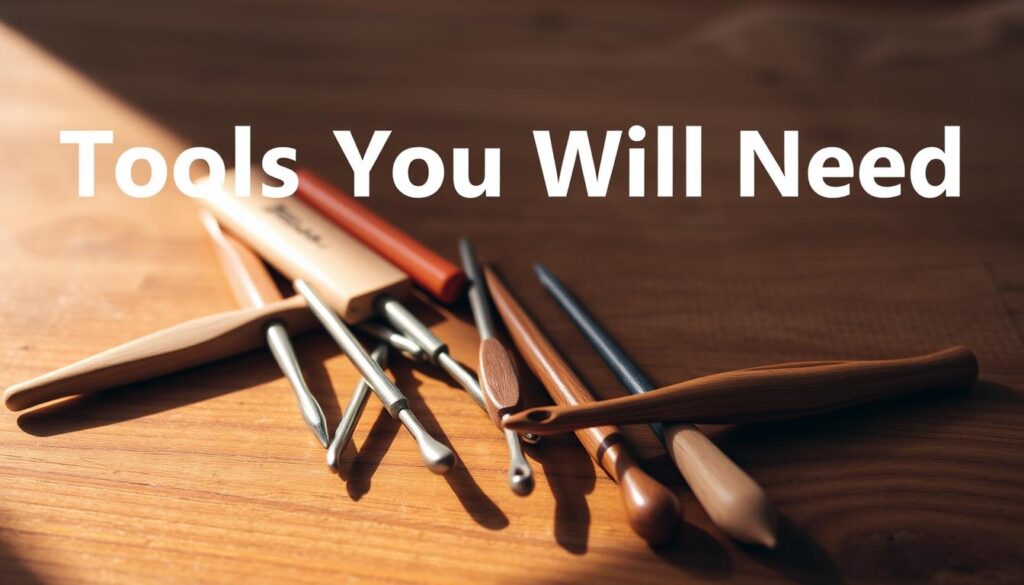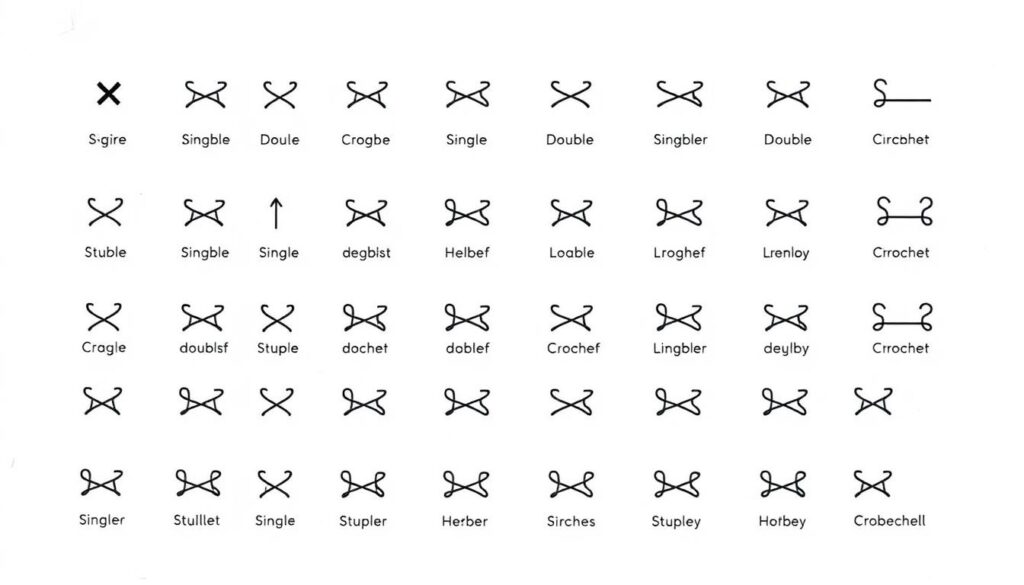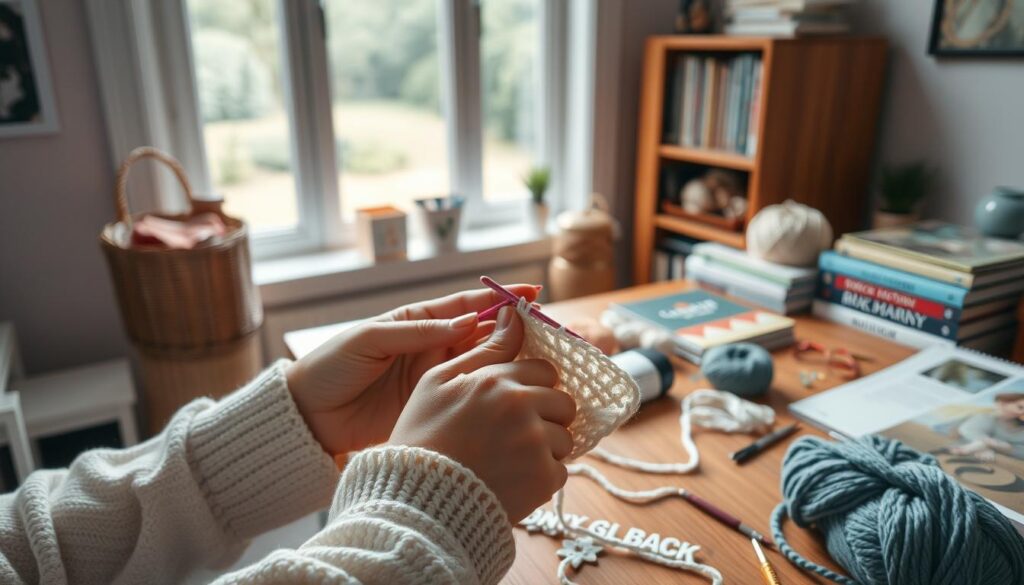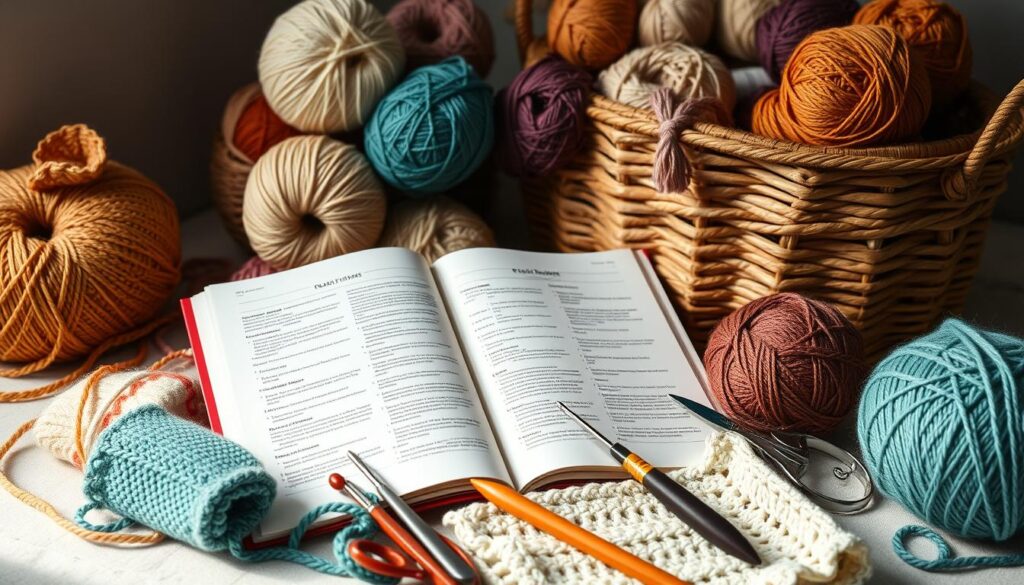Are you eager to unlock the world of crochet creativity, but struggle to decipher the instructions?
Understanding crochet pattern instructions is a crucial skill for any crocheter. It lets you tackle a wide range of projects with confidence.
Learning to navigate these instructions can seem daunting at first. But with practice, you’ll become proficient in no time. By breaking down the components of a typical pattern, you’ll gain the skills needed to start and complete various projects.
Key Takeaways
- Understand the basics of crochet pattern instructions
- Learn to decipher abbreviations and symbols
- Gain confidence in starting and completing projects
- Discover the importance of understanding crochet patterns
- Develop skills to tackle complex instructions
Understanding the Basics of Crochet Patterns
Learning to read crochet patterns can seem hard at first. But, once you break it down, it’s easier. To do well in crochet, you need to know the parts of a pattern.
Types of Crochet Patterns
Crochet patterns come in many forms. You’ll often find written instructions, charts, and diagrams. Written patterns give you step-by-step directions. Charts and diagrams help with complex designs.
Some patterns mix these formats. They offer both written instructions and visual charts. Getting used to different patterns makes your crochet journey better.
Common Stitch Abbreviations
Crochet patterns use stitch abbreviations a lot. Knowing these abbreviations is key to reading patterns right. Common ones include ‘ch’ for chain, ‘sc’ for single crochet, and ‘dc’ for double crochet.
Learning these abbreviations makes patterns easier to follow. Here’s a quick table of common stitch abbreviations:
| Abbreviation | Stitch |
|---|---|
| ch | Chain |
| sc | Single Crochet |
| dc | Double Crochet |
| hdc | Half Double Crochet |
Understanding Yarn Weight
Yarn weight is very important in crochet. It changes the texture and size of your project. Yarns range from lace weight (very fine) to bulky weight (thick).
Picking the right yarn weight is key to getting the look you want. Here’s a quick guide to yarn weights and their uses:
| Yarn Weight | Typical Use |
|---|---|
| Lace Weight | Delicate, intricate designs |
| Fingering Weight | Lace, baby items |
| Worsted Weight | Garments, accessories |
| Chunky/Bulky Weight | Quick, warm projects like hats and scarves |
Tools You Will Need
To start crocheting, you’ll need some basic tools. These tools help bring your projects to life. The right equipment makes a big difference in your crocheting experience.
Crochet Hooks
Crochet hooks are the main tool for your projects. They come in materials like aluminum, steel, and wood. Each has its own benefits.
Aluminum hooks are light and durable, a favorite among crocheters. Steel hooks are great for detailed work and last long. Wooden hooks offer a warm grip and are easy on the hands.

Yarn Types
The yarn you choose affects your project’s look and feel. Yarns include fibers like cotton, wool, acrylic, and blends. Cotton yarn is good for breathable items. Wool keeps you warm in winter. Acrylic yarn is soft, durable, and easy to care for.
Measuring Tools
Measuring tools are key for the right size project. Use a tape measure or ruler to check sizes. A gauge swatch helps measure your stitch tension. This ensures your project is the correct size.
How to Choose a Crochet Pattern
Choosing the right crochet pattern is key to a great project. With so many patterns out there, picking one can feel daunting.
Think about your skill level, how much time you have, and what you want to make. Whether you’re just starting or you’re an expert, there’s a pattern for you.
Beginner-Friendly Patterns
Beginners should look for patterns marked “beginner-friendly” or “easy.” These use simple stitches and help you grow your skills. Scarves, hats, and dishcloths are perfect for learning the basics.
Intermediate and Advanced Options
When you’re ready for more, try intermediate patterns. They might introduce new stitches or techniques. Advanced patterns are for the experts, with complex designs and large projects.
Seasonal and Themed Patterns
Make projects that match the season or a theme. For winter, try snowflakes or ornaments. Spring is a great time for flowers, and fall is perfect for Halloween items. Seasonal patterns add fun and make great gifts or decorations.
By thinking about your skill level, interests, and the occasion, you’ll find a pattern that’s fun and rewarding.
How to Read Crochet Pattern Instructions
To crochet well, you must learn to read pattern instructions. These instructions use special abbreviations, symbols, and notations. Knowing this language is key to finishing your project right.
Pattern Symbols and Notations
Crochet patterns use symbols and notations to guide you. These symbols mean different stitches, actions, or techniques. For instance, “ch” stands for a simple chain stitch, and “dc” is for a double crochet. Getting to know these symbols is the first step in understanding crochet instructions.

Understanding Stitch Count
Stitch count is very important in crocheting. It tells you how many stitches are in a row or round. Patterns will often tell you the stitch count to keep you on track.
To keep the right stitch count, count your stitches at the end of each row or round. If your count doesn’t match the pattern, you might need to add or remove stitches.
Reading Row by Row Instructions
Crochet patterns are written row by row or round by round. Each step builds on the last one, so following the pattern is crucial. When reading row-by-row instructions, watch the stitch count, the type of stitches, and any special instructions for that row.
To get the most out of row-by-row instructions, highlight or underline the row you’re on. This helps avoid confusion and ensures you’re following the pattern right.
The Importance of Gauge
Gauge is key in crochet, affecting your project’s size and fit. It’s vital to match the pattern’s gauge for the best results.
What is Gauge?
Gauge shows how tightly or loosely you crochet. It’s measured by counting stitches and rows per inch. This measure is crucial because it changes your project’s size.
To understand gauge, let’s consider an example: Imagine making a sweater. If your gauge is off, the sweater might be too big or too small. So, gauge is more than following a pattern; it’s about making your project wearable and comfortable.
How to Check Your Gauge
Checking your gauge is easy with a gauge swatch. Here’s how:
- Use the yarn and hook from the pattern.
- Crochet a 4×4 inch swatch.
- Measure stitches and rows in a 1-inch square.
- Compare your measurements to the pattern’s gauge.
If your gauge matches the pattern, you’re ready to go. But if it doesn’t, you might need to change your hook size or yarn.
Adjusting Patterns to Fit
Even with the right gauge, you might need to tweak your project for a perfect fit. This is true for garments. Here are some tips for adjusting patterns:
| Adjustment Needed | How to Adjust |
|---|---|
| Project is too small | Increase hook size or use a thicker yarn. |
| Project is too large | Decrease hook size or use a thinner yarn. |
| Need more length | Add more rows or rounds as needed. |
| Need less length | Reduce the number of rows or rounds. |
As a seasoned crocheter once said, “Gauge is not just a suggestion; it’s the backbone of a successful crochet project.” Getting your gauge right is a simple step that can greatly improve your project.
“The key to a great crochet project is not just following the pattern, but understanding the nuances of gauge and how it affects the final product.”
Common Crochet Techniques Explained
Learning common crochet techniques can make you a better crocheter. It opens up a world of creative possibilities. Mastering these basics lets you tackle many projects with confidence.
Chain Stitch (ch)
The chain stitch is the base of most crochet projects. It’s simple yet versatile, starting many patterns. To make a chain stitch, yarn over and pull through the loop on your hook. Keep doing this until you reach the desired length.
Keep your chain stitch even and not too tight. This prevents puckering or looseness in your work.

Double Crochet (dc)
The double crochet is key in crochet. It’s taller than the single crochet, adding texture and interest. To do a double crochet, yarn over, insert your hook, yarn over again, and pull up a loop. Then, yarn over once more and pull through both loops on your hook.
Get the hang of the double crochet. It’s great for many projects, from clothes to home decor.
Other Essential Stitches
There are more stitches like the chain stitch and double crochet. These include the single crochet (sc), half double crochet (hdc), and treble crochet (tr). Learning these stitches gives you a strong base for more complex patterns.
As you get better, try different stitch combinations. This lets you create unique textures and designs.
Following a Crochet Pattern Step by Step
Following a crochet pattern is easy with the right help. Breaking it down into simple steps makes creating a beautiful project easy.
Starting Your Project
To start, read the pattern to know what you need. Make sure you have the right yarn and hook size. Check the gauge to get the right size.
- Read the pattern carefully before beginning.
- Gather all necessary materials.
- Check your gauge to ensure the correct size.
Making Modifications as You Go
You might need to change the pattern to fit your style. This could mean changing yarn color, size, or stitch pattern. Be cautious when making changes, as they can change how your project looks and fits.
| Modification Type | Considerations |
|---|---|
| Changing Yarn Color | Ensure the new color matches the project’s requirements and doesn’t affect the gauge. |
| Adjusting Size | Recalculate the number of stitches and rows to achieve the desired size. |
| Modifying Stitch Pattern | Understand how the change will affect the project’s texture and appearance. |
Keeping Track of Your Progress
To avoid mistakes and ensure your project is on track, keep a record of your work. Use a notebook or digital tool to note rows completed, any changes, and issues.
By following these steps and staying organized, you can enjoy making something beautiful with your crochet project.
Troubleshooting Common Issues
Even the most skilled crocheters face problems. But, knowing how to fix them can save your project. Issues like mistakes in patterns, tangles in yarn, or running out of yarn can be frustrating. Yet, they are often easy to solve.
Fixing Mistakes in Crochet
Mistakes happen in crochet. The first step is to spot them early and fix them before they spread. If you’ve made a mistake, don’t panic. Most mistakes can be fixed by unraveling back to the error and starting again.
It’s wise to have a small crochet hook ready for this. This way, you can fix mistakes without trouble.

Dealing with Twists and Tangles
Twists and tangles can happen to anyone, even the most careful crocheters. To fix them, gently work out the tangle with your fingers or a blunt needle. For tough tangles, a yarn needle can help tease out the knot.
To avoid tangles, keep your yarn ball in a yarn bowl. Or, use a yarn ball winder to manage the yarn as you crochet.
What to Do if You Run Out of Yarn
Running out of yarn can be a big problem, but it’s not the end. If you’re out of yarn, stay calm. You might find more yarn from the same dye lot, or you could change the color for a new look.
If matching yarn is not possible, think about changing the project’s size. Or, use what yarn you have left to make something else.
Learning to troubleshoot common issues can save you time and reduce stress. It makes your crochet journey more enjoyable.
Tips for Reading Complex Patterns
Reading complex patterns takes practice, patience, and the right techniques. As you get better at crochet, you’ll face patterns that look hard. But with the right approach, you can figure out even the toughest designs.
Breaking Down Detailed Instructions
Start by breaking down complex patterns into smaller parts. Read the whole pattern first to get an idea of what it’s about. Then, find the parts that look tricky.
Work on one part at a time. Make sure you finish each step before moving on. This way, you avoid getting confused and build your project right.
Using Highlighters and Notes
Highlighting and taking notes can make complex patterns easier. Highlight important steps or stitches in the instructions. This helps you focus on key parts of the pattern.
Also, note your progress or any changes you make. This is great for keeping track of your work and avoiding mistakes.
Seeking Help from Online Communities
Don’t be afraid to ask for help from online crochet communities. Websites, forums, and social media groups for crochet offer lots of help. You can find tips from experts and solutions to common problems.
| Resource | Description | Benefit |
|---|---|---|
| Online Forums | Platforms where crocheters share knowledge and experiences | Access to a community that can offer advice and support |
| Crochet Websites | Websites dedicated to crochet patterns and tutorials | Detailed guides and tutorials for complex stitches and patterns |
| Social Media Groups | Groups on social media platforms focused on crochet | Opportunities to connect with other crocheters, share work, and get feedback |
By breaking down instructions, using highlighters and notes, and getting help online, you can get better at reading and doing complex crochet patterns. You’ll do it with more confidence.
Resources for Learning More
To improve your crochet skills, it’s key to check out many learning resources. As you grow, you’ll see that different resources fit different learning ways.
Recommended Books and Websites
Books and websites are great for those who like written and visual guides. Crochet books have detailed patterns and step-by-step guides for projects. They’re filled with patterns from famous crochet designers.
Websites for crochet have lots of free patterns, tutorials, and tips. These sites are run by skilled crocheters and designers. They share their knowledge to help others get better.
“The best way to learn is by doing, but having the right resources can significantly enhance your learning experience.”
YouTube Channels to Follow
YouTube channels for crochet are perfect for visual learners. Channels by experienced crocheters and designers have video tutorials. They cover skills from beginner to advanced.
- Crochet with Kim
- The Crochet Crowd
- Moogly
These channels give step-by-step guides and offer a community feel. Creators chat with viewers through comments and live streams.

Local Crochet Groups and Classes
Joining local crochet groups or classes is a great way to learn. You can get feedback on your work and stay motivated. Many communities have crochet clubs for sharing projects and learning.
Local yarn stores and community centers often have crochet classes. These classes are a good chance to get hands-on help from experienced teachers.
Final Thoughts on Your Crochet Journey
As you finish this guide, your crochet adventure is just starting. You’ve learned to read patterns, understand abbreviations, and work on projects. Now, it’s time to celebrate your finished work and find new patterns to improve your skills.
Celebrate Your Creations
You’ve put a lot of time and effort into your crochet projects. Be proud of what you’ve made and show it off. Celebrating your work keeps you motivated and excited for new challenges.
Explore New Patterns
Trying new patterns is key to growing your crochet skills. Experiment with different stitches, yarns, and techniques. As you practice, learning pattern symbols will become easier.
Grow Your Skills
Improving at crochet takes time and practice. Be patient and don’t worry about mistakes. With each project, you’ll get better and more confident. Keep going on your crochet journey, and soon you’ll be tackling complex projects.



